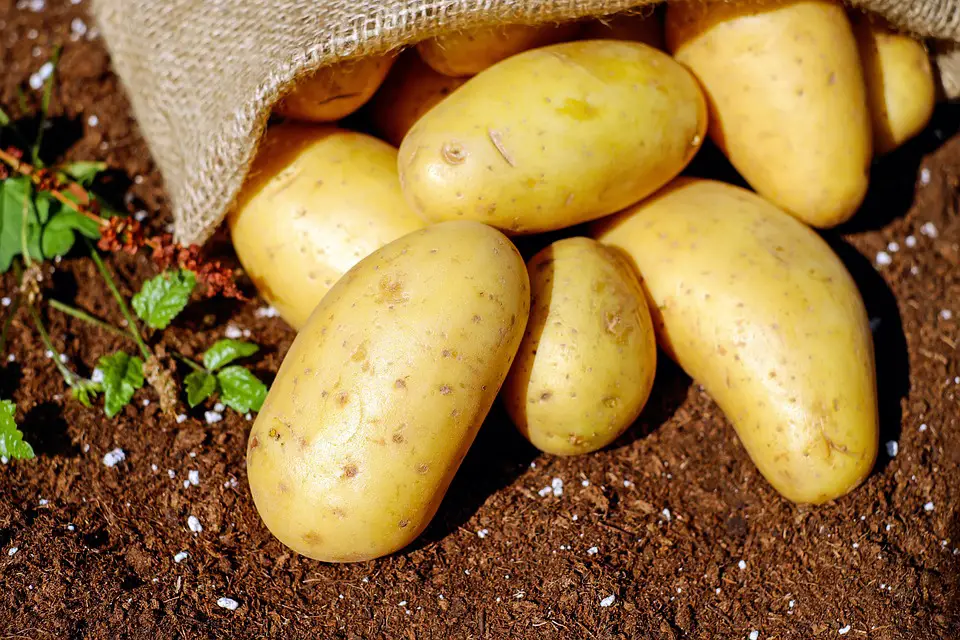Container vegetable gardening is a fantastic way to grow fresh produce right on your patio or balcony. It’s a great solution for those who have limited space, such as city dwellers or apartment renters. With the right containers, soil, and seeds, you can have a thriving vegetable garden in no time!
The Benefits of Container Vegetable Gardening
There are numerous benefits to starting a container vegetable garden. Here are just a few:
1. Space-saving:
With container gardening, you can make the most of limited space by growing vegetables in pots and containers.
2. Accessibility:
Having your vegetable garden on your patio or balcony makes it easy to access and care for your plants.
3. Control:
You have complete control over the soil, water, and sunlight your plants receive, which can lead to healthier and more productive crops.
How to Start Your Container Vegetable Garden
Ready to get started? Here’s a step-by-step guide to starting your container vegetable garden:
1. Choose the Right Containers:
Make sure your containers have drainage holes to prevent waterlogged soil. Opt for larger containers for plants that need more space to grow, such as tomatoes or peppers.
2. Select the Right Soil:
Use a good quality potting mix that is light and well-draining. Avoid using regular garden soil, as it can compact in containers.
3. Pick Your Vegetables:
Choose vegetables that are suitable for container gardening, such as tomatoes, peppers, lettuce, herbs, and radishes.
4. Provide Adequate Sunlight:
Most vegetables need at least 6 hours of sunlight each day. Place your containers in a sunny spot on your patio or balcony.
Container Vegetable Gardening Tips
Here are some tips to help you get the most out of your container vegetable garden:
1. Water Regularly:
Containers can dry out quickly, so make sure to water your plants regularly, especially during hot summer months.
2. Fertilize as Needed:
Vegetables grown in containers may need more frequent fertilization than those grown in the ground. Use a balanced fertilizer according to the instructions on the label.
3. Watch for Pests:
Keep an eye out for common pests such as aphids, caterpillars, and snails. Remove them by hand or use an organic pesticide if necessary.
Common Container Vegetable Gardening Mistakes
There are a few common mistakes that beginners often make when starting a container vegetable garden. Here are a few to watch out for:
1. Using the Wrong Size Container:
Plants need room to grow, so make sure your containers are large enough for the vegetables you want to grow.
2. Overwatering:
It can be easy to overwater plants in containers, leading to root rot. Allow the top inch of soil to dry out between waterings.
3. Not Providing Enough Sunlight:
Most vegetables need plenty of sunlight to thrive, so make sure your containers are in a sunny spot.
| Vegetable | Container Size | Sunlight Needs |
|---|---|---|
| Tomatoes | 5 gallons | 6-8 hours/day |
| Peppers | 3 gallons | 6-8 hours/day |
| Lettuce | 1-2 gallons | 4-6 hours/day |
Conclusion
Container vegetable gardening is a fun and rewarding way to grow your own fresh produce, even if you have limited space. With the right containers, soil, and care, you can enjoy a bountiful harvest right on your patio or balcony. Get started today and reap the benefits of growing your own vegetables!
Frequently Asked Questions
1. Can I grow any vegetable in a container?
While most vegetables can be grown in containers, some may require larger containers due to their size or root system. It’s best to research the specific needs of the vegetables you want to grow.
2. How often should I water my container vegetables?
Container vegetables may need to be watered more frequently than those grown in the ground, especially during hot weather. Check the moisture level of the soil regularly and water as needed.
3. Do I need to fertilize my container vegetables?
Yes, container vegetables may need more frequent fertilization than those grown in the ground, as nutrients can leach out of the containers more quickly. Use a balanced fertilizer according to the instructions on the label.
4. Can I reuse the soil in my containers for the next planting season?
It’s best to refresh the soil in your containers each planting season to replenish nutrients and prevent soil-borne diseases from building up. You can mix in fresh potting mix or compost to revitalize the soil.
5. How do I prevent pests in my container garden?
Regularly inspect your plants for signs of pests and remove them by hand if possible. You can also use organic pesticides or companion planting to deter pests naturally.
6. Can I grow root vegetables in containers?
Root vegetables such as carrots, radishes, and beets can be grown in containers with sufficient depth. Choose deep containers to accommodate the root growth of these vegetables.
7. How can I protect my container vegetables from extreme weather?
During hot weather, make sure your containers have adequate drainage and provide shade during the hottest part of the day. For cold weather, consider moving your containers indoors or protecting them with frost cloths or covers.
8. Can I grow herbs alongside my vegetables in the same container?
Yes, herbs make great companions for vegetables and can help deter pests or attract beneficial insects. Just make sure that the herbs and vegetables have similar sunlight and water needs.
9. What is the best time of day to water my container vegetables?
It’s best to water your container vegetables in the morning, as this allows the plants to absorb the moisture before the heat of the day. Avoid watering in the evening, as wet foliage can promote fungal diseases.
10. Can I start my container vegetable garden from seeds?
Yes, you can start your container vegetable garden from seeds, but it may take longer for the plants to mature. To speed up the process, you can also purchase started plants from a nursery or garden center.
